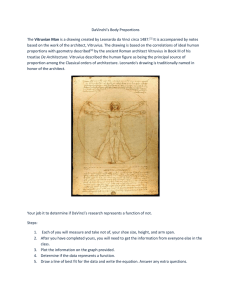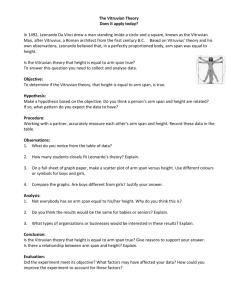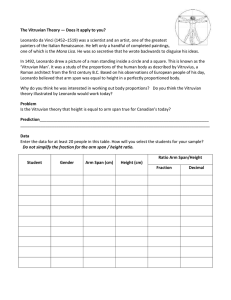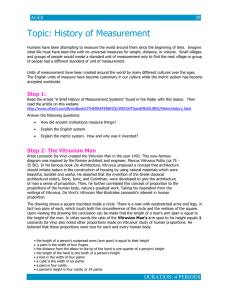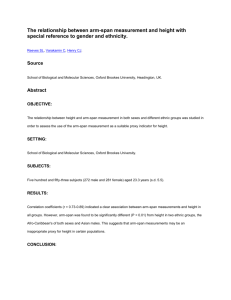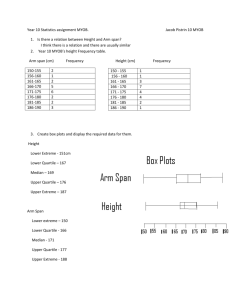Name: Date: Vitruvius, a Roman engineer of the first century B.C.
advertisement
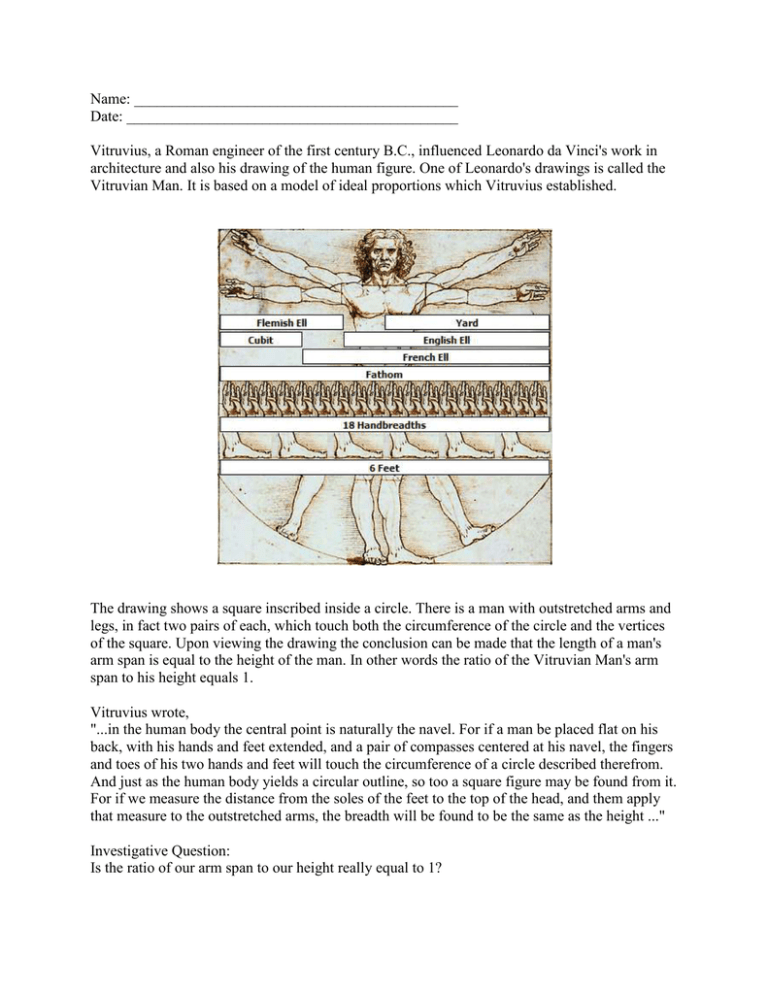
Name: ___________________________________________ Date: ____________________________________________ Vitruvius, a Roman engineer of the first century B.C., influenced Leonardo da Vinci's work in architecture and also his drawing of the human figure. One of Leonardo's drawings is called the Vitruvian Man. It is based on a model of ideal proportions which Vitruvius established. The drawing shows a square inscribed inside a circle. There is a man with outstretched arms and legs, in fact two pairs of each, which touch both the circumference of the circle and the vertices of the square. Upon viewing the drawing the conclusion can be made that the length of a man's arm span is equal to the height of the man. In other words the ratio of the Vitruvian Man's arm span to his height equals 1. Vitruvius wrote, "...in the human body the central point is naturally the navel. For if a man be placed flat on his back, with his hands and feet extended, and a pair of compasses centered at his navel, the fingers and toes of his two hands and feet will touch the circumference of a circle described therefrom. And just as the human body yields a circular outline, so too a square figure may be found from it. For if we measure the distance from the soles of the feet to the top of the head, and them apply that measure to the outstretched arms, the breadth will be found to be the same as the height ..." Investigative Question: Is the ratio of our arm span to our height really equal to 1? HEIGHT ARM SPAN HEIGHT ------------------------ARM SPAN Graph #1Use class data from columns one (height) and two (arm span) to create a graph of corresponding height and arm spans using the grid provided. Graph # 2Use class data from column three (height/arm span) to create a graph showing the ratio of height to arm span using the grid provided. Are your fractions/ratios similar to Vitruvius'? If you have fractions/ratios that are not similar, why do you think your findings are different from Vitruvius'? If you have fractions/ratios that are similar, what does this tell us about human bodies now compared to human bodies in the 1500's? Write a conclusion to the investigative question: Is the ratio of our arm span to our height really equal to 1? Justify your answer based on class data and the relationships between data points on the graphs created.
